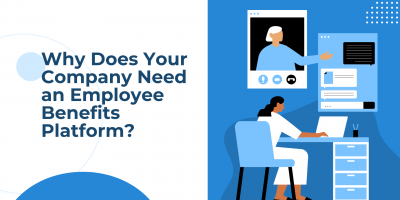
What are the Steps to Making a Wellness Program?
Companies thrive when their teams are happy, healthy, and engaged—but what are the steps to making a wellness program that supports these outcomes?

Remote work has certainly shown its benefits, from equal productivity or more than working in the office to huge cost savings for both employers and remote employees. However, it also introduced several new stressors on employees:
These are just a handful of the stressors remote workers are experiencing that are adding up, leading to higher levels of employee burnout than we’ve ever seen before.
While employees’ mental health isn’t something companies should ever ignore, it becomes a costly workplace challenge when companies don’t address it. According to a Gallup report on Employee Burnout, employees who claim to sometimes or always experience workplace burnout are:
Read on for three solid ways to support your remote employees’ health and wellness that almost any company in any industry can learn from and implement.

Everyone is different, and we all experience work-life and mental health in our unique ways. That means that not everyone who is struggling will display the same symptoms and behaviors, and even those who are not actively struggling still need attention and care. So, if you’re going to address mental health in your workplace successfully, start with something that helps everyone’s situation: communication and emotional validation.
You don’t have to bring the topic up in every email or every meeting. Instead, hold occasional team and individual check-ins that include mental health discussions, and always approach those conversations with a listening ear and an empathetic “no judgment” approach.
Listening to employees’ mental health concerns is an act of emotional validation. It doesn’t mean you have to solve anything—you only must understand and accept how the employees feel.
Regular one-on-one meetings between managers and their employees are a great opportunity to apply for this. It’s a natural setting to gauge your employees’ overall wellness. It serves as a healthy outlet where managers can stay informed while demonstrating how important mental health is to their organization through consistent acknowledgment.

Most employees now understand that wellness isn’t just about physical health, and that work is a massive contributor to their mental health state. But unfortunately, most companies’ standard employee wellness programs are outdated and irrelevant for the variety of mental health struggles remote employees face today.
An emerging wellness program that does fit the bill is a flexible wellness stipend, typically by reallocating unused office perks budget. By design, these programs are relevant and inclusive for all remote employees, regardless of location and mental health needs.
With a flexible wellness stipend or wellness allowance, companies can choose a fixed amount, recurring monthly, quarterly, or annually, that their employees can spend on whatever they feel is most meaningful for their mental health and overall wellness. Tools like Compt make the administration simple for everyone. Employees can spend it on anything from therapy sessions to running shoes, yoga gear, home gym equipment, a wellness app, and many other options. Programs like these tend to have higher utilization and engagement; meanwhile, employees genuinely appreciate flexibility and support.
Another easy program to implement is a curated list of mental health resources that applies to a wide range of employees’ potential mental health needs. Whether it’s for stress management or other things like anxiety, depression, behavioral disorders, substance abuse, or addiction, set up that comprehensive list and share it with all employees privately.
Be sure to include information about how to access those mental health resources, relevant details to your company’s industry and location, and how to use your company’s employee assistance program if one exists.

As remote work continues indefinitely and employees continue to be cooped up at home, one universal way to recognize and address their mental health is to offer company-wide days off specifically dedicated to wellness and burnout prevention.
Whether it is one day or one week, this has become somewhat of a trend. LinkedIn, HubSpot, and Hootsuite are a few companies that have made headlines in giving their full-time employees a paid week off specifically for their mental health. Other companies like SAP, Thomson Reuters, Google, and Cisco have opted for a company-wide mental health day for the same effect while being more flexible for both employees and employers to plan around.
Aside from giving employees a much-needed break and permission to unplug and recharge, a company-wide break from work shows that you value employee mental health enough to forgo those days of productivity.
There’s also a third benefit. Proactively giving all your employees PTO simultaneously alleviates a specific type of guilt employees often feel when taking time off: 41% of employees feel guilty about leaving their work to someone else when taking PTO, particularly those who work closely in teams.
As remote work continues and for some companies becomes a permanent fixture, the need for meaningful health and wellness support for remote employees will only grow. And while no law requires your company to take any action, the dangers in ignoring your remote employees’ mental health are:
Knowing the risks, it’s up to your company to decide how much your employees’ mental wellness matters. In this impossible hiring market, along with the everyday challenges of promoting remote employee engagement, supporting mental health is the least you can do to become a good employer.
Browse our curated list of vendors to find the best solution for your needs.
Subscribe to our newsletter for the latest trends, expert tips, and workplace insights!

Companies thrive when their teams are happy, healthy, and engaged—but what are the steps to making a wellness program that supports these outcomes?

From HR efficiency to employee retention, here’s why companies need to modernize their benefits administration with employee benefits platforms.

Embrace employee wellness programs’ significance in employee health and wellbeing.

In a world reshaped by AI, cost pressures, and disengaged employees, which employee benefits strategies will help your business thrive in 2024?
Used by most of the top employee benefits consultants in the US, Shortlister is where you can find, research and select HR and benefits vendors for your clients.
Shortlister helps you reach your ideal prospects. Claim your free account to control your message and receive employer, consultant and health plan leads.